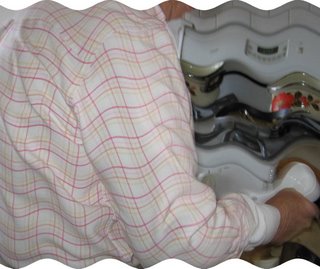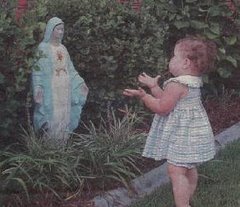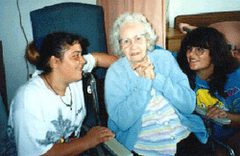Foucault's Pendulum is famous because it demonstrates the earth rotates on its axis. A universal joint allows a pendulum to rotate freely around a top fixed point as it swings. A pendulum stops moving at the end of the swing when inertia is finally overcome by gravity.
For a few swings, the pendulum appears to swing back and forth in the same line, as traced on the floor. But as observed over the period of a day (at the north and south poles), the path of a pendulum rotates 360 degrees, corresponding to the rotation of the earth on its axis. If the earth were stationary, the pendulum at any location on earth would swing back and forth always in the same direction. And that doesn't happen, except at the equator where the earth does not rotate under the pendulum. In all locations, the pendulum always swings back and forth in exactly the same direction, and it only appears that the pendulum is changing direction.
History repeats itself in cycles resembling the swing of a pendulum. For example, modern heresies are really old heresies that develop slowly, flourish during a rapidly passing time, then decay slowly.
History has a certain inertia--an object in motion tends to stay in motion. Once an ideology or era begins to flourish, it is difficult to stop--similar to the midpoint of the pendulum swing.
History seems to stop and reverse itself only at the extremes of ideology or movement--the endpoints of a pendulum swing.Finally, the direction of history appears to change at times--but that is dependent on where we stand.
For some time, I've been concerned that when the pendulum of the historical Church (not the eternal Church!) swings back from liberalism, that it will swing so hard that it will quickly pass a reasonable position. For example, the Church was too severe before about 1960 (in my opinion), and required one to abstain from drinking all water and eating no food after midnight if one wanted to receive Holy Communion. Consequently, only a handful of Catholics received Holy Communion at later Masses on Sunday morning.
The rules were changed about 1960 to forbid water within one hour and food within three hours of Holy Communion. The new moderate rules resulted in significantly more Communions at late morning Sunday Masses. Moreover, people who traveled a long distance to a Mass, especially in hot climates, were able to appropriately nourish themselves with water and food and still go to Holy Communion.
Within a very few years, the rules were changed again to require only one hour abstention from food, and water without limit, before reception of Holy Communion. The new rules completely abandoned any requirements for real sacrifices to receive Holy Communion.
As observed above, once the pendulum passed the reasonable middle position (between somewhat harsh laws and very liberal laws), it moved very quickly to a very liberal position where it has stayed for over 30 years. Now to the next problem--the return of the pendulum!
A small 'critical mass' is now available for a resurgence of traditionalism within the Church. It has now passed the pendulum endpoint and is swinging slowly back to the center. Frankly, history tells us the pendulum will begin to move more rapidly and won't stop at the reasonable middle. We can expect that it will now swing to the other extreme and remain there for a considerable period. The swing to the other side will take longer than the remainder of my lifetime, but my grandchildren will see it.









No comments:
Post a Comment